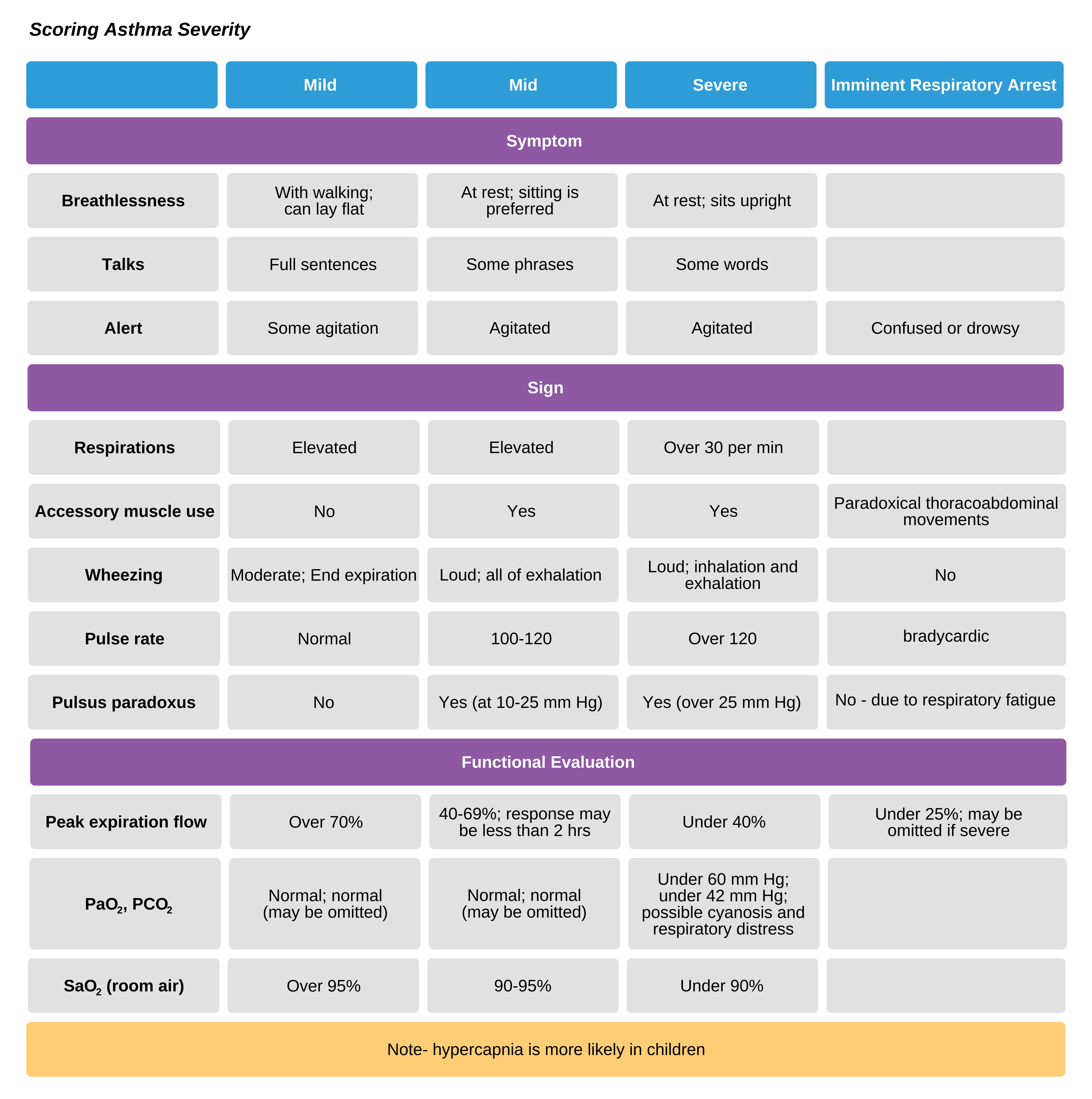Introduction
As many as 24 million individuals in the US were diagnosed with asthma in 2014 or almost 8% of the population. Children under 18 years are more commonly affected at 8.6% compared to 7.4 % for those 18 and older. Females are more likely to have asthma compared to males. Of these, nearly 11 million admitted to having at least one asthma attack. The rates of ED visits associated with asthmas have remained stable between 2001 and 2009, while in 2014, there were 1.8 million asthma-related ED visits and over 3600 deaths. Non-Hispanic blacks are 2.9 times more likely to die from asthma than Caucasians, and adults are 5.6 times more likely to die than children. Asthma can be a major contributor to ICU admissions (between 2-20%), with 33% requiring advanced airways and ventilatory support.

A child experiencing an asthma attack.
These numbers may be underestimations as some deaths due to asthma may be erroneously classified as respiratory infection or influenza-related deaths. Often mortality affects patients with severe and inadequately controlled disease. Many of these deaths are preventable and often in young patients. The AHA guidelines address the care of life-threatening and severe asthma attacks such as status asthmaticus and other potentially fatal complications and exacerbation. Other associations, Global Initiatives for Asthma as well as National Asthma Education & Preventing Program, provide guidance regarding the care of asthma in the emergency setting. Care depends on the severity of symptoms, underlying disease, and risk for respiratory arrest.
Related Video: Introduction to Asthma Exacerbation

Be aware that patients may have different levels of severity on varying parameters; these classifications should be used as a guide.